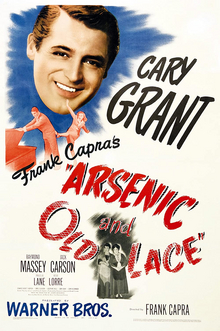
Peter Lorre was a Hungarian and American actor, first in Europe and later in the United States. He began his stage career in Vienna, in the Austro-Hungarian Empire, before moving to Germany where he worked first on the stage, then in film in Berlin in the late 1920s and early 1930s. Lorre caused an international sensation in the Weimar Republic-era film M (1931), directed by Fritz Lang, in which he portrayed a serial killer who preys on little girls.

William Henry Pratt, known professionally as Boris Karloff and occasionally billed as Karloff the Uncanny, was an English actor. His portrayal of Frankenstein's monster in the horror film Frankenstein (1931) established him as a horror icon, and he reprised the role for the sequels Bride of Frankenstein (1935) and Son of Frankenstein (1939). He also appeared as Imhotep in The Mummy (1932), and voiced the Grinch in, as well as narrating, the animated television special of Dr. Seuss' How the Grinch Stole Christmas! (1966), which won him a Grammy Award.

Raymond Hart Massey was a Canadian, later American, actor, known for his commanding, stage-trained voice. For his lead role in Abe Lincoln in Illinois (1940), Massey was nominated for the Academy Award for Best Actor. Among his most well-known roles were Dr. Gillespie in the NBC television series Dr. Kildare (1961–1966), Abraham Farlan in A Matter of Life and Death and Jonathan Brewster in Arsenic and Old Lace (1944).
The year 1944 in film involved some significant events, including the wholesome, award-winning Going My Way plus popular murder mysteries such as Double Indemnity, Gaslight and Laura.

Marie Josephine Hull was an American stage and film actress who also was a director of plays. She had a successful 50-year career on stage while taking some of her better known roles to film. She won an Academy Award for Best Supporting Actress for the movie Harvey (1950), a role she originally played on the Broadway stage. She was sometimes credited as Josephine Sherwood.
Joseph Otto Kesselring was an American playwright who was best known for writing Arsenic and Old Lace, a hit on Broadway from 1939 to 1944 and in other countries as well.
Arsenic and Old Lace may refer to:

Arsenic and Old Lace is a play by American playwright Joseph Kesselring, written in 1939. It has become best known through the 1944 film adaptation starring Cary Grant and directed by Frank Capra.

Bela Lugosi (1882–1956), best known for the original screen portrayal of Bram Stoker's Dracula in 1931, performed in many films during the course of his 39-year film career. He appeared in films made in his native Hungary, Germany and New York before re-locating to Hollywood in 1928. Films are listed in order of release.
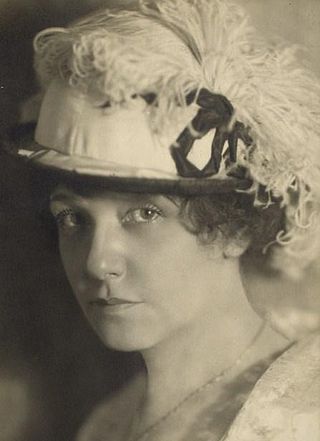
Jean Adair was a Canadian actress. She was also known as Jennet Adair.

Boris Karloff (1887-1969) was an English actor. He became known for his role as Frankenstein's monster in the 1931 Frankenstein, leading to a long career in film, radio, and television.

The Comedy of Terrors is a 1963 American International Pictures horror comedy film directed by Jacques Tourneur and starring Vincent Price, Peter Lorre, Basil Rathbone, Boris Karloff, and Joe E. Brown in his final film appearance. It is a blend of comedy and horror which features several cast members from Tales of Terror, made by AIP the year before.
An angel of mercy or angel of death is a type of criminal offender who is usually employed as a medical practitioner or a caregiver and intentionally harms or kills people under their care. The angel of mercy is often in a position of power and may decide the victim would be better off if they no longer suffered from whatever severe illness is plaguing them. This person then uses their knowledge to kill the victim. In some cases, as time goes on, this behavior escalates to encompass the healthy and the easily treated.
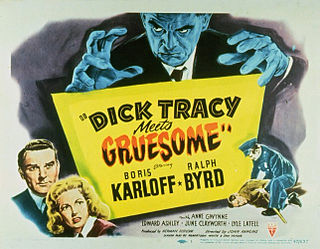
Dick Tracy Meets Gruesome is a 1947 American thriller film directed by John Rawlins and starring Boris Karloff, Ralph Byrd and Anne Gwynne. The film is the fourth and final installment of the Dick Tracy film series released by RKO Radio Pictures.
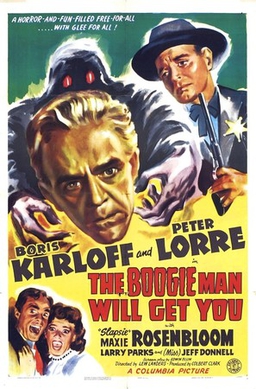
The Boogie Man Will Get You is a 1942 American comedy horror film directed by Lew Landers and starring Boris Karloff and Peter Lorre. It was the final film Karloff made under his contract with Columbia Pictures, and it was filmed in the wake of his success in the 1941 Broadway production Arsenic and Old Lace. As he had done several times previously, Karloff played the part of a "mad scientist", Professor Billings, who is using the basement of his inn to conduct experiments using electricity to create a race of superhumans. The inn is bought by a new owner, who is initially unaware of the work Billings is conducting.
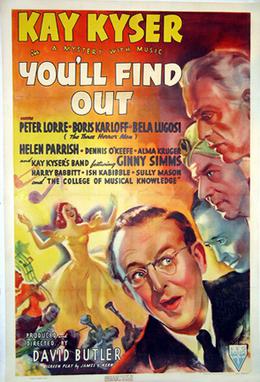
You'll Find Out is a 1940 American comedy film directed by David Butler and starring Kay Kyser. In 1940, the film was nominated for an Academy Award for Best Original Song at the 13th Academy Awards. In the film, members of an orchestra hired to play at a young heiress's birthday party uncover a plot against her. The film was very popular and made a profit of $167,000.
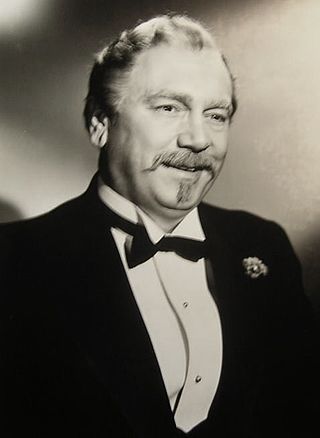
John Alexander was an American stage, film, and television actor.
Arsenic & Old Lace is a 1962 television film directed by George Schaefer and starring Tony Randall, Dorothy Stickney, and Mildred Natwick. It first aired during season 11 of the NBC anthology series Hallmark Hall of Fame. It is an adaptation of Joseph Kesselring's 1939 play Arsenic and Old Lace.

Jack Whiting was an American actor, singer and dancer whose career ran from the early 1920s through the late 1950s, playing leading men or major supporting figures.
Arsenic & Old Lace is a 1969 American television film directed by Robert Scheerer and starring Helen Hayes, Lillian Gish, Fred Gwynne, Sue Lyon, Jack Gilford and David Wayne. It is an adaptation of Joseph Kesselring's 1939 play Arsenic and Old Lace. The production was shot on color videotape before a live audience. Inserts of outside action that were shot on film were added to the production for the April 2, 1969 broadcast.
